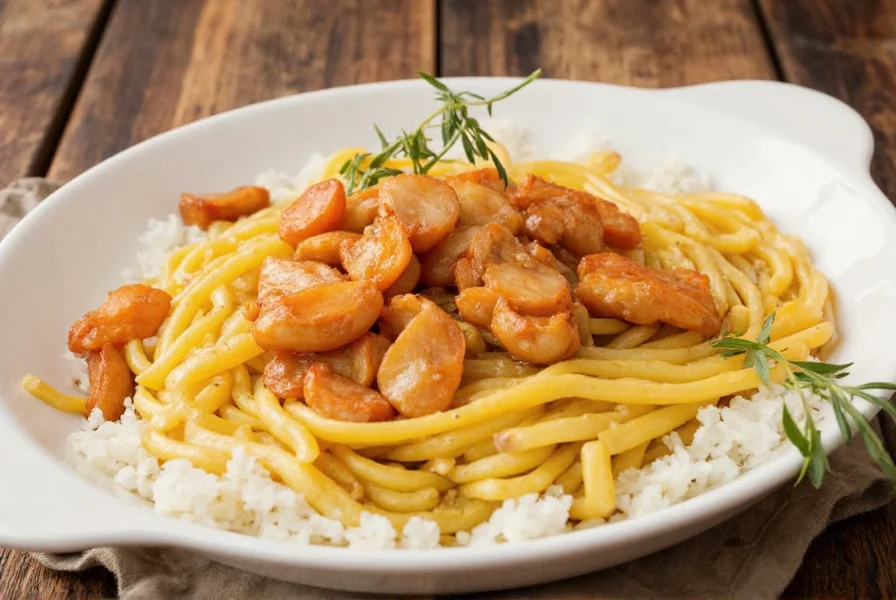When selecting fresh root ginger for cooking, look for firm, smooth rhizomes with taut skin and minimal wrinkles. The best roots feel heavy for their size and emit a distinctive citrusy aroma when scratched. Properly stored in a paper bag in the refrigerator's crisper drawer, fresh ginger maintains peak quality for up to three weeks.
Why Fresh Root Ginger Outperforms Powdered Alternatives
Fresh root ginger contains gingerol, the compound responsible for both its pungent flavor and health benefits. Unlike dried ginger powder, fresh ginger offers brighter, more complex flavor notes with citrus undertones. When heated, gingerol transforms into zingerone, creating that familiar warming sensation without overpowering other ingredients. This chemical transformation makes fresh ginger ideal for both immediate consumption and slow-cooked dishes.
Essential Preparation Techniques
Peeling ginger requires minimal effort when using the proper technique. Instead of a vegetable peeler, use the edge of a spoon to scrape away the thin skin—this preserves more of the flavorful flesh beneath. For fine grating, freeze the ginger root first; frozen ginger grates more smoothly and releases more juice. When making ginger syrup or tea, slice ginger thinly against the grain to maximize surface area and flavor extraction.
6 Exceptional Root Ginger Recipes
1. Immune-Boosting Ginger-Turmeric Tea
This simple beverage combines fresh ginger with complementary ingredients for maximum health benefits. The recipe requires just five ingredients but delivers complex flavor and significant anti-inflammatory properties.
| Ingredient | Measurement | Preparation Notes |
|---|---|---|
| Fresh root ginger | 2-inch piece | Thinly sliced against the grain |
| Fresh turmeric | 1-inch piece | Grated finely |
| Lemon | ½, juiced | Add after cooling slightly |
| Honey | 1 tbsp | Raw, added to cooled tea |
| Water | 4 cups | Brought to gentle simmer |
Simmer ginger and turmeric in water for 15 minutes, then remove from heat. Add lemon juice and honey after the mixture cools to 160°F (71°C) to preserve beneficial compounds. This fresh ginger tea recipe for immunity provides optimal bioavailability of active compounds when prepared this way.
2. Ginger-Soy Glazed Salmon
This 20-minute dish showcases how ginger complements rich fish. The marinade combines freshly grated ginger with soy sauce, rice vinegar, and a touch of maple syrup. Allow the salmon to marinate for 15 minutes minimum—this gives ginger's enzymes time to tenderize the fish while infusing flavor without overpowering the delicate flesh.
3. Ginger-Infused Carrot Soup
A perfect example of winter recipes with fresh ginger root, this soup balances sweet carrots with ginger's warmth. Sauté onions and ginger first to mellow the ginger's sharpness, then add carrots and vegetable broth. Blend until smooth and finish with a swirl of coconut milk. The ginger quantity can be adjusted based on desired heat level—start with one tablespoon grated ginger per pound of carrots.
4. Ginger-Lime Chicken Stir-Fry
This easy ginger stir-fry recipe for beginners demonstrates Asian cuisine techniques using accessible ingredients. The key is preparing a ginger-garlic paste first, then cooking proteins separately before combining everything at the end. Fresh ginger should be added early in the cooking process to mellow its sharpness while retaining aromatic qualities.
5. Ginger-Spiced Pear Crisp
For dessert lovers seeking fresh ginger recipes for baking, this crisp combines ripe pears with freshly grated ginger. The topping uses crystallized ginger for concentrated flavor pockets. When baking with ginger, remember that heat transforms its flavor profile—fresh ginger provides initial brightness while crystallized ginger delivers deeper warmth throughout baking.
6. Ginger-Mint Lemonade
This refreshing beverage exemplifies summer recipes with fresh ginger root. Create a ginger syrup by simmering sliced ginger in simple syrup for 10 minutes, then strain and combine with fresh lemon juice and mint leaves. The ginger syrup can be made ahead and stored for up to two weeks, making this drink perfect for entertaining.
Adjusting Ginger Intensity in Recipes
Ginger's potency varies based on freshness and growing conditions. When following recipes with fresh root ginger measurements, start with less than specified and adjust to taste. Older ginger develops more concentrated flavor, while younger "spring ginger" offers milder notes. For sensitive palates, blanching ginger slices in boiling water for 30 seconds reduces sharpness while preserving flavor.
Substitution Guidance
When fresh ginger isn't available, understand these substitution ratios: 1 inch fresh ginger ≈ ½ tsp ground ginger ≈ 1 tsp crystallized ginger. Note that ground ginger lacks the bright top notes of fresh root and works better in baked goods than savory dishes. For fresh ginger substitution in marinades, add a squeeze of lemon juice to compensate for missing volatile compounds.
Frequently Asked Questions
How much fresh ginger equals ground ginger in recipes?
One inch of fresh ginger root (about 1 tablespoon grated) equals approximately ¼ teaspoon ground ginger. Remember that fresh ginger provides brighter, more complex flavor, while ground ginger offers deeper, earthier notes better suited for baking.
Can I freeze fresh ginger for later use?
Yes, freezing actually makes ginger easier to work with. Simply place whole ginger root in a freezer bag and freeze. When needed, grate the frozen ginger directly without thawing—it releases more juice and flavor this way. Frozen ginger maintains quality for up to six months.
What's the best way to store cut ginger?
Store cut ginger in an airtight container with a paper towel to absorb excess moisture. Place in the refrigerator's crisper drawer for up to one week. For longer storage, submerge cut ginger in dry sherry or vodka in a sealed container, which preserves flavor for up to one month while adding complexity.
Why does my ginger taste bitter in recipes?
Bitterness usually occurs when ginger is overcooked or when the skin isn't properly removed. Ginger skin contains more fiber and can become bitter when heated. Always peel ginger thoroughly and add it later in the cooking process for delicate dishes. For soups and stews, remove ginger pieces after 20-30 minutes of simmering to prevent bitterness.
How can I reduce ginger's spiciness without losing flavor?
Blanching ginger in boiling water for 30 seconds significantly reduces sharpness while preserving aromatic compounds. Alternatively, slice ginger thinly and soak in cold water for 10 minutes before use. For baked goods, combining ginger with acidic ingredients like citrus juice helps balance its heat while enhancing overall flavor complexity.













 浙公网安备
33010002000092号
浙公网安备
33010002000092号 浙B2-20120091-4
浙B2-20120091-4